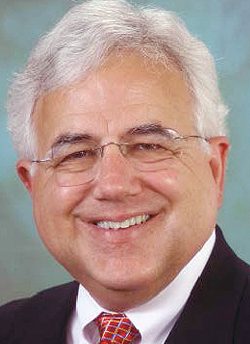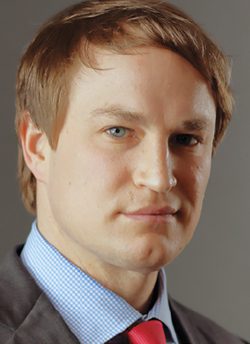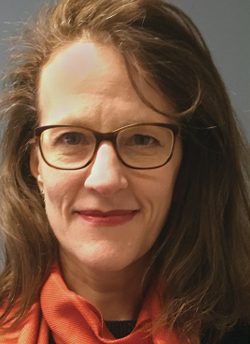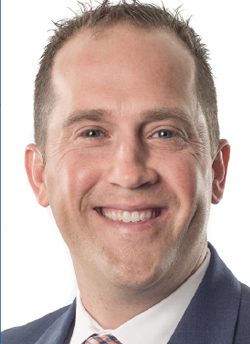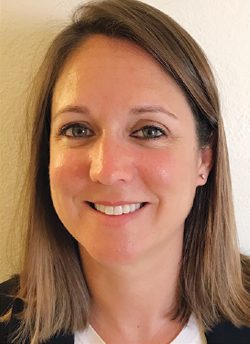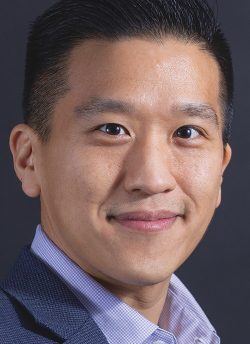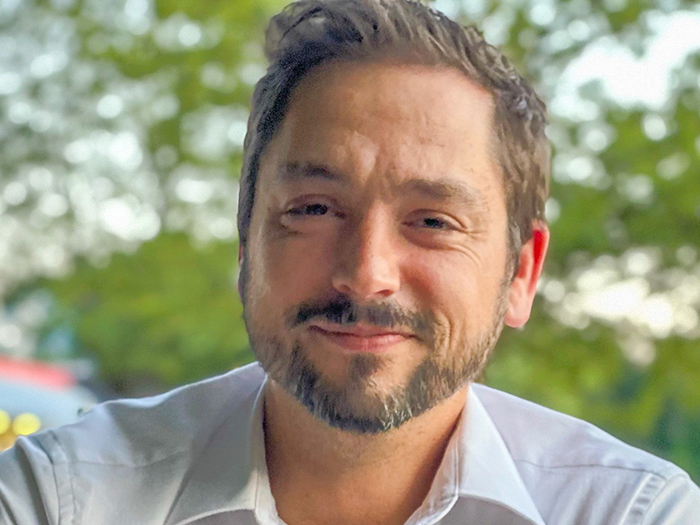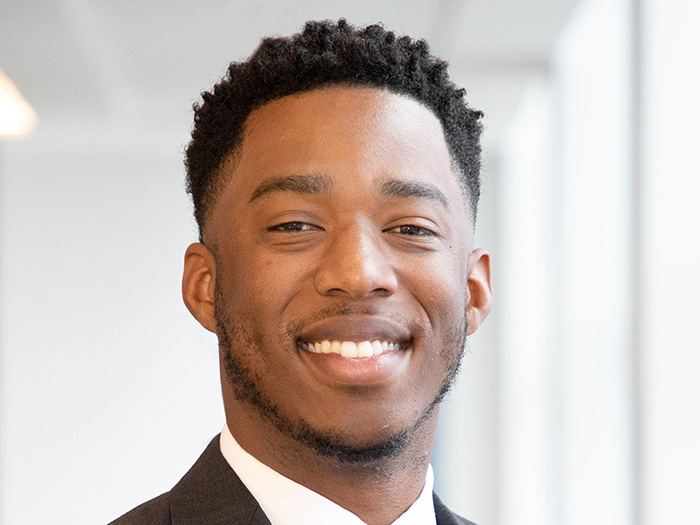The Top 6 Health Care Insurance Brokers of 2019
Sollie Bartoe, Area Senior Vice President, Gallagher
When Baptist Memorial Health Care Corp. merged last year with a health care system, its master group medical practice liability policy was ready for the new physicians. That’s because of Gallagher’s Sollie Barto. Under Baptist’s prior structure, claims could pit doctor against employer, said Rodney Betts, VP, finance.
Bartoe established a group policy that provided appropriate limits for each doctor’s specialty; an excess program, which allowed Betts to sleep at night; and the “consent to settle” provision eliminated adversarial claims.
Bartoe collaborated with the New Mexico Hospital Association on the New Mexico Patient Compensation Fund, under which hospital professional liability losses are limited to $600K. But Gerald Champion Regional Medical Center was ineligible for the program.
Bartoe developed a fix: A wrap-around liability program for hospital professional, general and universal life. Under the plan, said CEO Jim Heckert, cases go before a panel of physicians. “It’s a fairer litigation process. Sollie made it available to small, independent hospitals like us.”
Nonprofit NorthCrest Medical Center discovered water gushing from corroded underground pipes that were too old for an insurance payout. Bartoe knew how to retrofit without disruptive excavation. And the kitchen leak “wasn’t covered, but he fought for months. If he couldn’t do it, it couldn’t be done,” said CFO Kim Pridgen. “Sollie’s the one I call for honest feedback and advice.”
Read More: 11 Critical Risks Facing the Health Care Industry
Erik Burt, Area President, Gallagher
Erik Burt faced an interesting challenge: Herding independent “alpha dog” radiologists into the largest insurance purchasing group in the specialty. But he got it done and produced significant savings, said Bud Dey, EVP, The Radiology Essential Solutions Group.
Burt “drove through adversity to an improbable feat” in 2018’s hardened medical malpractice market. “Carriers believe there’s a lot of exposure they don’t know about,” Dey said. In fact, the group had not performed well since negotiations began in May. Nevertheless, “he delivered an amazing outcome.”
Burt wanted to use economies of scale for better-priced medical malpractice insurance for a physician purchasing program consisting of 300 pediatricians from a handful of pediatric groups, said Chad Fragle, senior director strategy and operations for Children’s Medical Center in Dallas. But first, he needed buy-in from the physicians, CEOs, office managers and boards of directors.
“He’s adaptable enough to make [sure] all the stakeholders fully understood the coverages and features in different malpractice plans,” Fragle said. “He’s a strategic partner with the tactical skills [to] get things done.”
The broker has concerns about whether his small- to mid-sized clients were protected on cyber risk. Physicians didn’t know what to buy or where to buy it. Burt created a best-in-class policy form and worked with Lloyd’s on the manuscripted coverage, which is primary or excess depending upon whether a claim triggers the underlying sublimit.
Ruth Kochenderfer, Senior Vice President, Marsh
When the Justice Department issued “Individual Accountability for Corporate Wrongdoing,” Lynn Calhoun, AVP, risk & insurance services, Children’s Hospital of Philadelphia, didn’t know CHOP’s existing D&O policy wouldn’t extend to some of its volunteer board members’ exposures in the “new era of personal accountability.”
“God forbid our dedicated board should face personal, non-indemnifiable fines from a false claims action,” Calhoun said. “We wouldn’t have plugged that gap without Ruth [Kochenderfer]. … She can explain legal things in layman’s terms.”
For a California health care system, Kochenderfer anticipated a risk in her client’s cyber security policy because its lack of full policy limits for regulatory fines could include OCR investigations, which had been on the rise for privacy breaches in health care systems. She renegotiated policy limits for a full tower. Within budget.
“Nobody else has her expertise,” the system’s risk manager said.
Markets were shying away from Trinity Healthcare, because its cyber policy was built into its integrated program, and excess liability covered its cyber policy.
“One big cyber claim could drain the bank in underlying limits and excess limits,” said El Iaconelli, Trinity’s director, risk finance. Kochenderfer created a standalone cyber tower, structured so markets could compete in pricing.
“The credits from the excess bought a bunch more excess limits in the standalone tower,” Iaconelli said. “It was a win for cost and savings, efficiency in risk transfer and from a risk enterprise perspective.”
Brandon Robertson, Vice President of Health Care, The Buckner Company
Brandon Robertson is a former administrator with an assisted care company and has also worked with an ambulance company. As such, he has a deeper knowledge of health care risks than many brokers might. He is also willing to deliver an extraordinary level of customer service.
In one instance, a sprinkler line froze in an assisted living facility, one of Robertson’s clients. When alerted to the incident, Robertson drove 40 miles to the facility, bringing his in-house adjuster with him.
With his sector experience to draw on, Robertson assisted the staff at the center in cleaning up the flood waters and moving residents. Robertson worked for hours to help.
“I thought it was an extraordinary level of customer service, “ the client said.
Robertson wasn’t done. He worked for four more months on the claim and on the restoration of the facility, not stopping until the facility was completely restored.
Another facility, another flood, and again, Robertson jumped into help. “He didn’t just sign some papers and go home,” the admiring client said. Robertson worked through the night to help move some 60 residents and help salvage their belongings.
His clients say Robertson frequently outshines other brokers, many of them with national footprints, with his ability to go above and beyond to craft tailored coverage.
Robertson took over one health care account from a national broker. He went on to save the client more than $300,000 in premiums.
Lindsay Roos, Senior Vice President, Marsh
Ascension Care Management already had 12 insurance lines in its program, and it wanted to add an investment manager’s E&O line for its third-party business and venture exposure for its four private equity funds. “We are not the client for typical medical malpractice brokers,” said Holly Meidl, VP, risk services.
Complicating matters, a carrier backed out because of an acquisition that added 30 percent to its exposure. And five days before the policy was to bind, an eight-figure judgment from an old loss came down. Marsh’s Lindsay Roos kept it all from unravelling.
“Lindsay worked with the lead carrier to hold the program together. Because of that relationship, her technical expertise and her ability to make key arguments,” she succeeded, said Meidl, with the new coverages and an additional $25 million in coverage.
Trinity Healthcare faced a different issue.
As several of its financial lines approached renewal, its relationship with the incumbent deteriorated, said Ruth Goodell, Trinity’s SVP, insurance and risk management services.
Meanwhile, a major U.S. carrier withdrew from Trinity’s jurisdiction, creating a hole in its professional liability program. As Roos connected with Bermuda carrier Markel to fill the void, she was “multitasking at her finest,” said Goodell.
“She listens to our concerns, crosses boundaries and helps solve problems. She saved us money when the market was changing and costs were rising.”
Henry Yuan, Account Executive, Aon
As medical practitioners assumed increasingly administrative roles, the risk manager for a large health care organization began to worry about an administrative act producing one of two worst-case scenarios: Either a savvy plaintiff’s attorney could “double dip” into both its malpractice and errors and omissions towers, or “neither policy responds, and we’re left holding the bag.”
It was both a structural gap and an overlap, the risk manager said. The risk manager gives Aon’s Henry Yuan credit for proposing firewalls that would prevent claims from accessing both towers.
Another large health care organization was worried about its affiliated practice’s clinical trials. “Nobody had any idea who was working on what, what coverage was available, what was in place or what was needed,” said a risk manager.
Yuan dove into “identifying the real risk and how to address it — through transfer or process change or something else,” said the risk manager. The resulting coverage is “fantastic” and “providers and staff understand what to do, what risk looks like. They’re part of the process.”
An EPL carrier for Inland Empire Health Plan initially denied a claim based on its interpretation of policy language. Yuan took on the role of advocate, said Steve Sohn, managing counsel. “He said, ‘This is why it’s under the coverage inclusion.’ He knows the right buzzwords.”
The campaign had a good outcome and the carrier retracted its initial denial. “This is why you develop a relationship with a broker who has a relationship with the carriers,” said Sohn.

